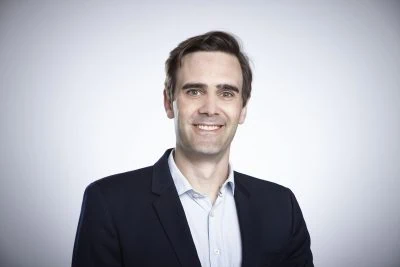In the German energy and climate policy debate, there is a relatively young consensus that electricity from renewable sources (RE electricity) must become the backbone of sector coupling and thus of future energy supply. In principle, there is also agreement that both forms of electrification are required: direct electrification is already achieving rapidly increasing market shares in some applications (e.g. electric cars, heat pumps), uses scarce renewable electricity more efficiently than hydrogen applications and is therefore usually a comparatively cost-effective climate protection option. Indirect electrification through green hydrogen1Green hydrogen is electrolysis hydrogen produced from 100% renewable electricity. and e-fuels2E-fuels are electricity-based synthetic fuels synthesised from hydrogen and carbon, mostly carbon dioxide or carbon monoxide. is still in the early stages of its development, but may go beyond various frontiers of direct electrification in the future, making it indispensable for achieving carbon neutrality given the limited availability of sustainable biofuels.
In the current debate, however, there are hard lines of conflict, especially on two fundamental questions: First, which sectors and applications should use hydrogen and e-fuels? Second, are fossil intermediate solutions such as blue hydrogen from natural gas with CO2 capture and storage (CCS) necessary and suitable to bridge the short- to medium-term shortage of green hydrogen? Behind the different answers to these questions lie competing concepts about the long-term importance of electricity-based energy sources and about the future energy system: in particular, whether renewable electricity can be produced primarily domestically3“Domestic” primarily means in Germany, but also refers to a lesser extent to the European electricity network, especially Germany’s direct electricity neighbours., which is essential for direct electrification, or instead should be imported indirectly in the form of hydrogen and e-fuels from abroad.
In fact, there are large technological bandwidths for the use of hydrogen and e-fuels in the long term that are compatible with the current climate targets in Germany and the EU. Current scenario studies on achieving climate neutrality in Germany (Ariadne, 2021; BDI, 2021; BMWi, 2021; dena, 2021; Prognos, Öko-Institut, Wuppertal-Institut, 2021) span a solution space for the utilization of hydrogen and e-fuels in 22 individual scenarios, ranging from 10% to 35% of final energy demand in 2045.
However, the achievability of the various scenarios depends crucially on innovation and technology diffusion, both of green hydrogen and of direct electrification. These future developments are fraught with techno-economic uncertainties, which is reflected in the different assessments and positions in the debate. Even if politics can accelerate progress with good framework conditions, fundamental uncertainties remain with regard to both the achievable dynamics in the short term and the long-term potential of technologies. Defining one long-term technology path today would therefore jeopardize the achievement of the climate goals.
The future role of hydrogen and e-fuels, which are practically not used as energy carriers at present, will be limited in the coming years primarily by their availability. In 2030, only about 1% of the EU’s energy demand can be met with domestic green hydrogen if the European 40 GW expansion target for electrolysis capacity is reached. However, for this to happen, the hydrogen market ramp-up must be twice as fast as with wind power and similarly fast as with photovoltaics. Even if an even faster, unprecedented growth is conceivable and non-European imports are taken into account, the hydrogen quantities will be proportionally low until at least 2030. For the time after that, uncertainties remain as to when green hydrogen will be available in large quantities (> 10% of final energy demand) and at what prices. The realizable quantities and prices of e-fuels are additionally affected by the scarcity and costs of non-fossil CO2 sources, in particular from systems for CO2 air separation.
In addition, the future areas of application for hydrogen and e-fuels depend on the extent to which the domestic expansion of renewable energy and direct electrification encounter bottlenecks and limits. In addition to bottlenecks related to the speed of domestic RE deployment and the diffusion of electrifying technologies, there are uncertainties regarding the long-term scope to which applications can be competitively electrified. While the technical RE potential is also sufficient for far-reaching electrification, a greatly accelerated RE expansion and the necessary grid expansion are only possible with broad social acceptance. It is still difficult to assess the possible limits of electrification today, but important insights will be gained in the coming years.
The large scenario ranges should therefore not be interpreted as technological or political leeway. The path to reaching the 2030 climate goals, at least, is very narrow and the necessary steps are clearly visible. There are more possible paths after 2030, but their viability is uncertain from today’s perspective. The achievable bandwidths – due to bottlenecks in the supply of hydrogen and e-fuels on the one hand and barriers to direct electrification on the other hand – could turn out to be limited, so that only a narrow, not yet definable, viable path turns out to be possible in the long term.
A successful hydrogen strategy must be embedded in a climate protection strategy that takes into account the uncertainties of both hydrogen and e-fuels as well as direct electrification. Such an integrated strategy cannot and does not have to commit itself to a preferred hydrogen model or a long-term path for the entire energy system. Instead, it enables politics to initiate joint learning processes with business, science and society and to make adaptive decisions based on new findings.
Such a strategy is initially based on the fact that there is already reliable knowledge about elements that, despite the uncertainties, are a common part of all scenarios and that can therefore be considered necessary. Such “no regret elements” must be implemented consistently due to the urgency of the climate goals. The directional decisions required for this will already lead to new insights into future technology costs, diffusion speeds or potential limits in the next few years.
In addition, innovations in hydrogen applications or electrification must also be promoted through research and pilot projects in areas for which it is still uncertain whether the respective energy source can or should play a role there. No preliminary decisions should be made in order to avoid path dependencies. Despite the uncertainties, expensive lock-ins can be largely avoided if the existing (in-)flexibility when switching energy sources is taken into account or used. Technological advances and limits should be constantly reviewed, new findings secured and the overall strategy adjusted accordingly.
Five cornerstones of an adaptable hydrogen strategy should help the German government to navigate through the scenario space, which is characterized by uncertainties.
- The supply (especially import) of green hydrogen and e-fuels should be developed urgently and vigorously. This increases the probability that at least the absolutely necessary quantities of electricity-based energy sources will be available in the long term. Prerequisites for rapid growth are targeted regulatory measures and technology-specific subsidies. Rising CO2 prices support diffusion but are unlikely to be sufficiently high before 2030 to enable green hydrogen to be competitive, so active, technology-specific policy support is essential. Politicians should also support the emergence of an international hydrogen market in a coordinating manner.
- Initially, hydrogen should be used primarily for “no regret applications”, as long as it is not foreseeable when and at what prices electricity-based energy sources will be available. In particular, these are applications in which direct electrification is fundamentally not possible: the use of hydrogen in industry (ammonia, steel) and of e-fuels in petrochemistry and in long-distance aviation and shipping. These demands are pooled at relatively few locations and regions and could therefore potentially form the nucleus of a later hydrogen network. The sum of these demands is likely to exceed the available quantities of green hydrogen for the foreseeable future, so that the focus on a few applications will not limit the hydrogen ramp-up on the supply side. Carbon contracts for differences (CCfDs) for hydrogen applications in industry and e-kerosene quotas in aviation create secure demand and thus also incentives for the hydrogen supply side. As this is unlikely to be coordinated in a market-based manner by a CO2-price until at least 2030, the regulation and promotion of hydrogen should be based on a comprehensive hierarchy (or “merit order”) of the various hydrogen applications. This order can be adjusted in the future when the quantities and prices of hydrogen and potential limits of direct electrification can be better estimated.
- Step by step, a decision should be made on expanding the use of hydrogen. In the coming years, projects will increasingly reveal which hydrogen costs and quantities can be realized and to what extent the use of hydrogen can be gradually expanded after an ambitious and focused start. At the same time, accelerating the expansion of renewable energy and direct electrification will show their innovation potential and limits. Then, market players and politicians will be able to make better decisions about areas of application for hydrogen. In particular in heavy truck transport and in process heat, the competition between energy sources can increasingly be coordinated by rising CO2-prices, provided energy taxes are also harmonized. The switch to e-fuels would also be possible in the short term after 2035 for the remaining stock of combustion technologies if e-fuel production progresses quickly enough. If, on the other hand, a broad availability of cheap hydrogen and e-fuels is expected from the outset and these expectations are not met, there is a risk of a fossil lock-in, high costs and failure to meet the climate targets. E-fuels should therefore be viewed as a long-term, and potentially costly, fall-back option for areas where electrification and hydrogen have shown limitations.
- Direct electrification and domestic renewable energy expansion must be significantly accelerated. A robust result of the scenarios is that rapid and extensive electrification based on an accelerated expansion of renewable energy is also indispensable for achieving the climate goals. A “decade of electrification” is needed up until 2030, in which renewable energy capacity triples, battery electric vehicles dominate new car registrations and around 5 million new heat pumps are installed. In 2045, the share of direct use of electricity in the final energy mix lies between 50% and 70% in all Ariadne scenarios. A consistent advance and testing the limits of direct electrification is associated with comparatively low risks if this is continuously compared with the progress of the RE expansion. Electrical applications in the transport and building sectors are so efficient that the additional electricity demand by 2030 would amount to about 100 TWh (compared to 2020) if diffusion is successful (just under 20 % of today’s electricity demand).
- A “blue hydrogen bridge” could increase the supply of climate-friendly hydrogen and enable an earlier transformation to hydrogen. The national hydrogen strategy allows the import of blue hydrogen during the transition to a fully green hydrogen supply. Since the greenhouse gas (GHG) emissions of blue hydrogen can vary greatly depending on the country of origin and the CCS technology used, there is a need for certification, regulation and pricing of life cycle GHG emissions. In particular, this must include the methane slip during the production and supply of natural gas abroad. Green hydrogen should be promoted and developed independently of blue hydrogen in order to realize the innovation potential and cost reductions. Here, too, GHG emissions must be fully taken into account.
After a decade of almost stagnant emissions in the transport, industry and building sectors, the German government must now play a very active role in shaping the transformation. Technology-specific regulation and funding, especially for “no regret elements”, is essential. Clear guardrails can also prevent hydrogen from being expected too early in areas for which there will not be sufficient hydrogen quantities or infrastructure available by 2030. At the same time, a strong increase in the price of CO2 is necessary so that it can increasingly trigger demand-side transformations in industry, transport and buildings. A CO2-price can play a central role in the coordination between electrification, hydrogen and e-fuels. For this to take effect, the complex energy and carbon flows of a sector-coupled energy system need to be embedded in a high and comprehensive carbon pricing.
This Ariadne analysis was prepared by the mentioned authors of the Ariadne consortium. It does not necessarily reflect the opinion of the entire Ariadne consortium or the funding agency. The content of the Ariadne publications is produced in the project independently of the Federal Ministry of Education and Research.
Authors

Dr. Hans Christian Gils
Deutsches Zentrum für Luft- und Raumfahrt - Institut für Vernetzte Energiesysteme












